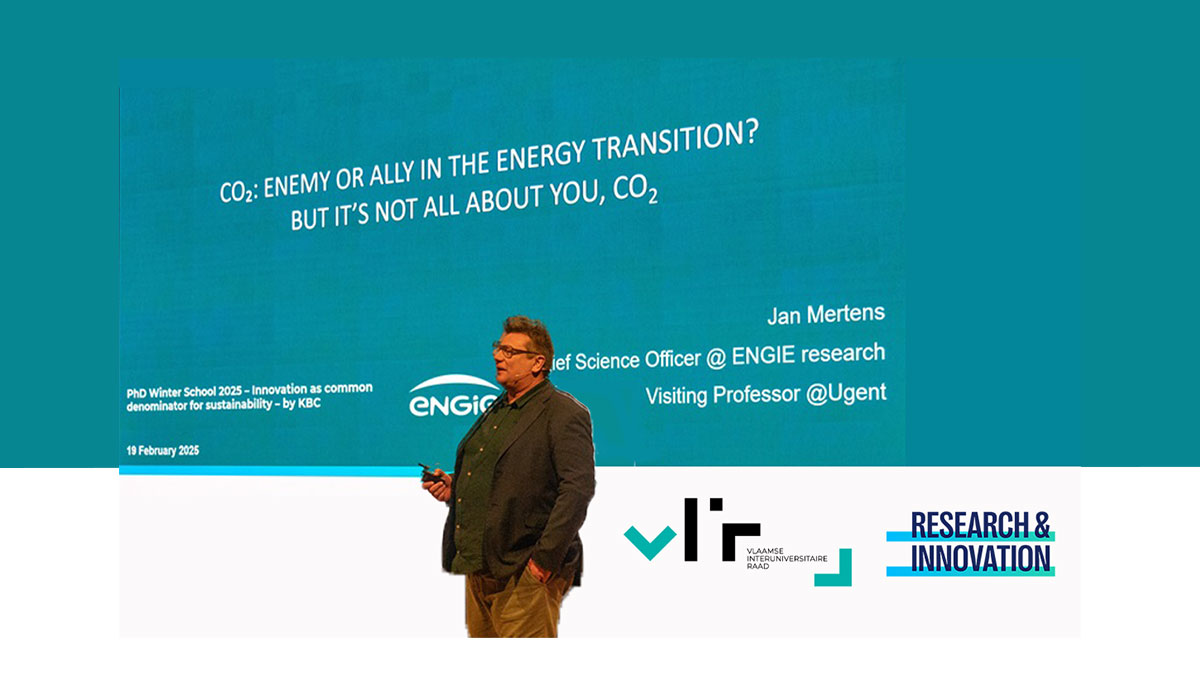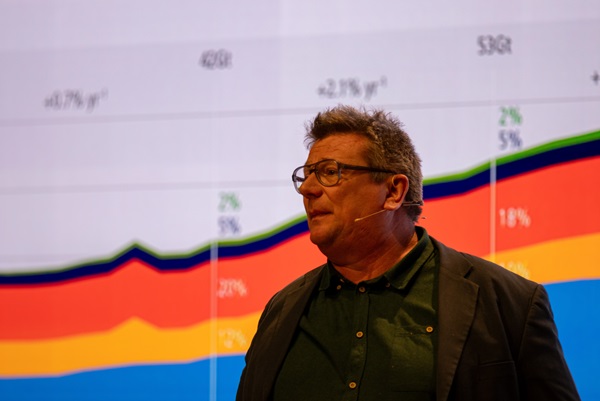


Pessimists sound clever; optimists change the world!
Sure, let’s go!
It's a very broad question, but we can easily categorise it into three main paths. The first one is quite obvious and refers to continuing to increase energy efficiency. It is about doing the same or even more with less energy. We started this journey some decades ago but we need to continue accelerating on this!
The second area of improvement involves electrifying wherever possible. The example everyone knows is the electric car, which is increasingly replacing combustion engine vehicles. But there are many other examples, such as the gradual replacement of gas boilers in buildings with heat pump systems, or the adaptation of industrial processes to use more electric furnaces, for instance. And if we manage to power these applications with electricity produced in a carbon-neutral way (i.e., through renewable energy), the CO2 savings are even greater.
The third area concerns sectors where it's difficult to replace fossil fuel technologies, the so-called “hard-to-abate” sectors. Aviation is a prime example, as an electric plane would need to carry such heavy and bulky batteries that there would be no room left for passengers or cargo, and its range would be much shorter than what our large jets' kerosene tanks allow. In these cases, we can still make progress by replacing fossil fuels with identical molecules synthesized using electricity and CO2 .This is often referred to as power to molecules or how can we turn electricity into molecules which will still be required where electricity can not do the job. Hydrogen, made from renewable electricity for example, is often an intermediate molecule in these kind of chemical conversions.
For instance, by replacing fossil methane (CH4) with synthetic methane obtained from CO2 and hydrogen, we can globally reduce the amount of CO2 released into the atmosphere. The origin of the CO2 is a crucial parameter when estimating the exact amount of CO2 savings. In case biogenic or atmospheric CO2 is used, complete carbon neutrality can be achieved!
Exactly. What I mean by this is that chemistry is a wonderful ally because it allows us to turn pollutants into useful molecules. Combining CO2 with hydrogen (H2), which is easy to produce in large quantities with renewable electricity, allows us to synthesize fuels like methane (CH4) or kerosene, as well as other useful molecules and chemicals like methanol.
In principle, yes. The chemical reactions are well-known, and the processes exist on an industrial scale. Even biological conversion technologies are today being piloted. The only aspect that needs our attention is the cost. The cost of capturing and preparing CO2 combined with the cost of synthesizing hydrogen, means that the produced molecules, like methane, are still 3 to 5 times more expensive than simply using fossil methane, which literally comes out of the ground in some parts of the world. In other words, the 'green premium,' the price difference to use 'carbon-neutral' instead of fossil fuels, means that today we can't afford to use these e-molecules.
By applying an electric current between two electrodes immersed in water, we generate both oxygen and hydrogen. In certain regions of the world, plenty of renewable energy is or will be produced (via solar panels or wind turbines) and can be used to produce hydrogen in an economically competitive way.
Hydrogen produced via this strategy, called 'green' hydrogen, can be produced in large amounts where cheap renewable electricity is available. As we just said, combining it with CO2 paves the way for a series of very useful molecules, like e-methane, e-kerosene, or e-methanol. Since hydrogen is the smallest molecule on earth, it makes it very difficult and expensive to transport. It also requires new infrastructure. Whereas, if we combine it with CO2, these molecules (e-methane, e-methanol, …) are much easier to transport AND we have the existing infrastructure to do so!
On metals first : as we’re switching to increased renewable energies for electricity production and if we electrify what we can, the amount of minerals and metals needed to make batteries, wind turbines or PV panels, also increase sharply. That’s why we should think about how we can access or mine these minerals and metals in an environmentally and ethically sustainable way. If we first consider their origin, we see that the 3 or 4 key ones are coming from geopolitically relatively unstable countries, and outside Europe. Add on top of this, if we then look at where they are processed into batteries or into PV panels, it’s even worse because we’re fully dependant on one country: China. As a consequence, mitigating our vulnerability to critical raw material supply chain is a concern of prime importance.
Onto water, we can’t forget the world needs its drinking water, just as a lot of energy processes do, so we have to be responsible competitors. A positive aspect is that with less fossil thermal plants we will decrease our cooling water needs. But on the other side, mining more metals and minerals, also means an increased need in water supply. Plus, the hydrogen production that we just mentioned, also starts with water.
Another dilemma is that sunny regions, ideal for cheap renewable energy (phototaics) generation, are at the same time often arid and water-scarce. The ideal is to find locations where renewables, desalination, hydrogen production and creation of synthetic molecules using CO₂ can work together.
Adoption of non-mature technologies is accelerating at an unexpected pace. What we need to focus on is an even faster scale up of technologies. Many of them are available in research labs, at universities, at start-ups... but not yet at industrial scale. So, the challenge is not really about inventing new technologies, but rather about making them all more cost competitive against fossil alternatives, to squash all arguments. And as I always say, “We won’t be able to blame technology if we don’t succeed”.